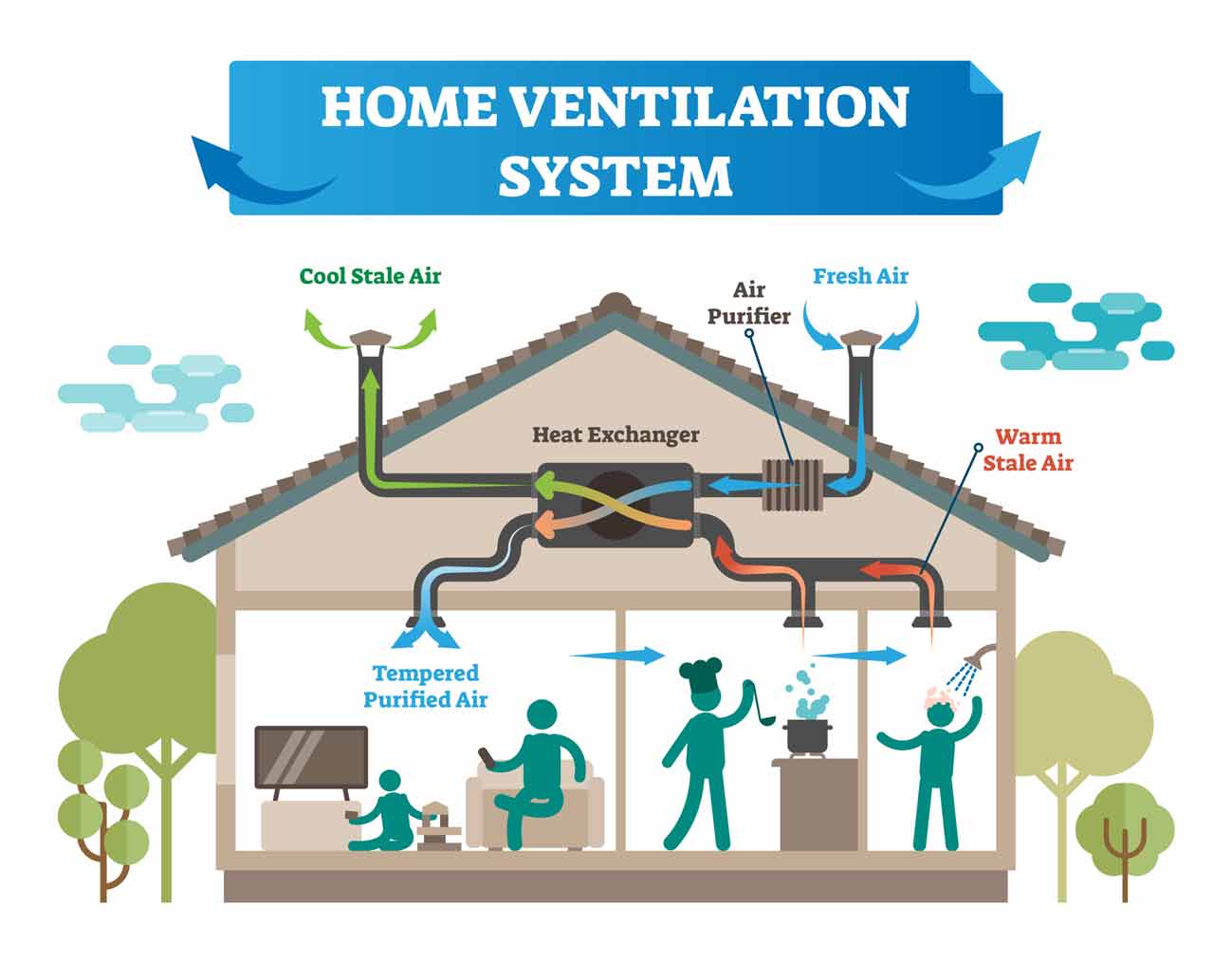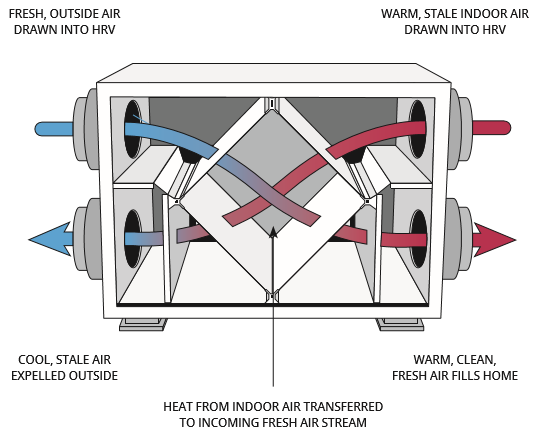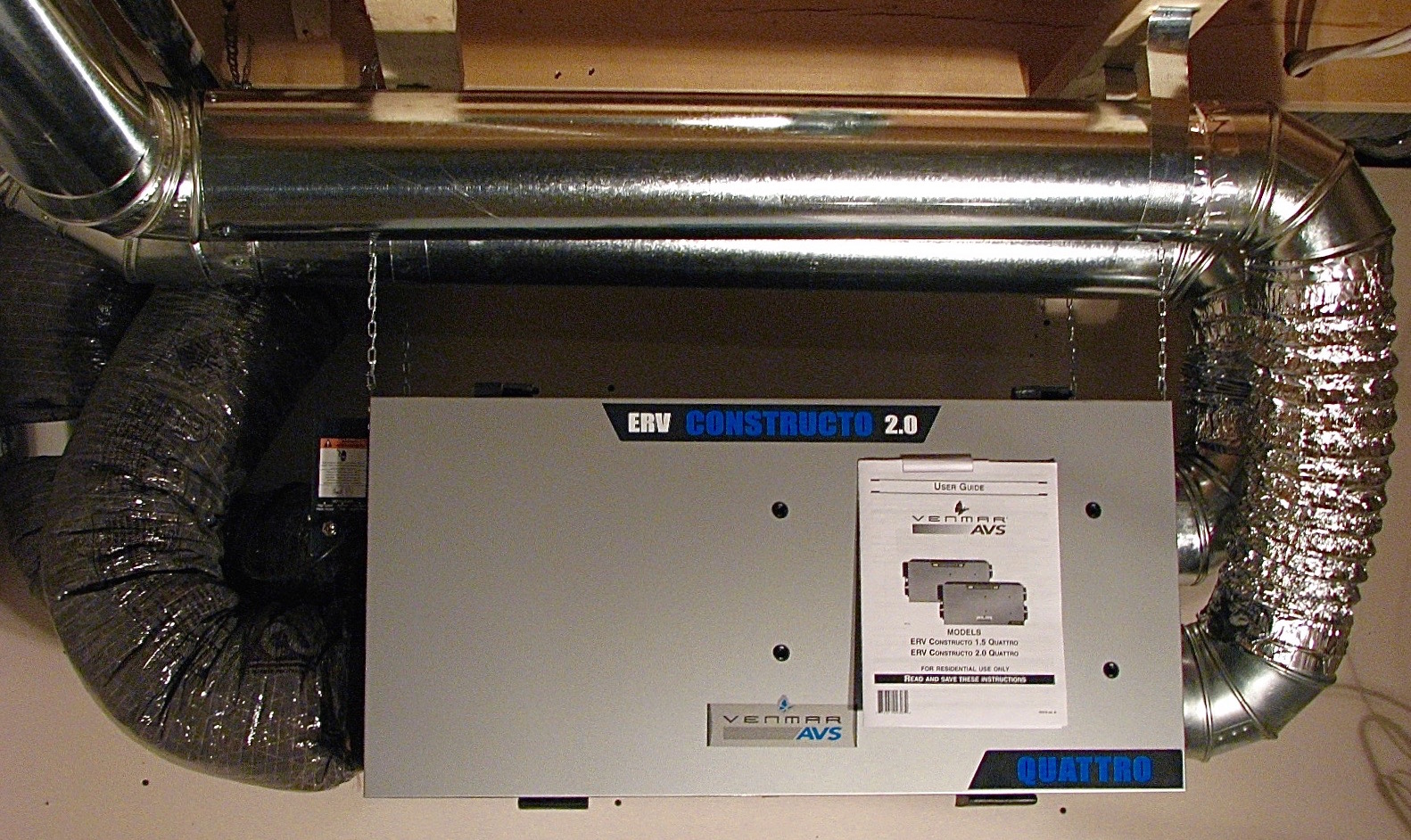HRV Demystified: What Every Homeowner Must Understand
Wiki Article
Discovering the Perks of Heat Recovery Ventilation for Energy Effectiveness in Homes
Heat Recovery Ventilation (HRV) systems provide homeowners a functional technique to enhancing energy efficiency. By redeeming warmth from outward bound air, these systems can considerably minimize cooling and heating expenses. Furthermore, they offer a consistent supply of fresh air, boosting indoor air quality and convenience degrees. As homeowners consider sustainable alternatives, recognizing the nuances of HRV systems becomes progressively important. What factors should one evaluate before making such an investment?Recognizing Heat Recovery Ventilation Solutions

Just How HRV Enhances Indoor Air Quality

Power Cost Savings: The Economic Benefits of HRV
Maximizing energy effectiveness, heat recovery ventilation (HRV) systems provide considerable financial advantages for homeowners. By recovering and recycling warm from exhaust air, HRVs substantially minimize heating & cooling costs. This innovation can lead to energy savings of approximately 30%, depending upon climate and usage patterns. Property owners often observe minimized utility bills quickly after setup, making HRVs a monetarily wise click over here now investment gradually. In addition, numerous regions provide motivations or rebates for energy-efficient upgrades, additionally boosting the financial allure. As power costs continue to climb, the cost-effectiveness of HRVs website link ends up being increasingly clear. Generally, the consolidation of HRV systems not only advertises power performance yet additionally contributes to long-lasting economic cost savings for homes.The Ecological Impact of Heat Recovery Ventilation
A significant ecological benefit of heat recovery ventilation (HRV) systems hinges on their capability to reduce total power consumption. By recovering warmth from exhaust air and moving it to incoming fresh air, HRV systems minimize the need for energy-intensive home heating and cooling approaches. This reduction in energy need adds to decrease greenhouse gas exhausts, as much less fossil fuel is needed to maintain comfortable indoor temperature levels. Furthermore, HRV systems boost indoor air top quality by successfully exchanging stagnant air with fresh outside air, minimizing reliance on mechanical air conditioning systems that can damage the environment. Generally, the execution of HRV systems sustains lasting living methods and lines up with global initiatives to fight climate change by promoting power efficiency in household settings.
Selecting the Right HRV System for Your Home
Just how can homeowners assure they choose the best heat recovery ventilation (HRV) system for their needs? They ought to examine their home's size and design, as these aspects influence air flow demands. Next, examining the system's effectiveness rankings is essential, as higher ratings indicate much better performance and power financial savings. House owners should also consider installation and maintenance expenses, comparing various brand names and models for worth. Additionally, it is very important to examine sound degrees, as some systems run more silently than others. Consulting with HVAC specialists can give tailored recommendations based on certain home conditions. Lastly, analyzing individual reviews and service warranties can help in making a notified choice, ensuring that the picked HRV system successfully boosts interior air top quality and energy efficiency.Frequently Asked Questions

Just how Often Should I Tidy or Keep My HRV System?
The frequency of cleansing or maintaining a heat healing ventilation (HRV) system commonly relies on use and ecological elements. Generally, it is recommended this page to do upkeep every six months to ensure peak performance and air high quality.
Can HRV Systems Aid Minimize Moisture Levels Indoors?
HRV systems can effectively reduce indoor humidity degrees by exchanging stale, damp air with fresh, drier air from outdoors. HRV Heat Recovery Ventilation. This procedure assists maintain a balanced interior environment, enhancing convenience and protecting against moisture-related issues
What Is the Life expectancy of a Regular HRV System?
The lifespan of a regular heat recovery ventilation (HRV) system varies, typically lasting between 10 to 15 years. Regular upkeep can expand its effectiveness and functional life, making sure peak performance throughout its use period.Exist Any Kind Of Noise Interest In HRV Solutions?
Sound worries with HRV systems can develop, especially from fan operation. Several modern-day systems are created to decrease audio levels, ensuring they operate quietly while preserving performance, which attends to possible disruptions in living settings.Can I Install an HRV System Myself, or Do I Need a Specialist?
The private contemplated whether to set up the heat recovery ventilation (HRV) system directly or hire a professional. Typically, while DIY installation is feasible, proficiency guarantees correct functionality and conformity with regional building regulations, enhancing system efficiency.Report this wiki page